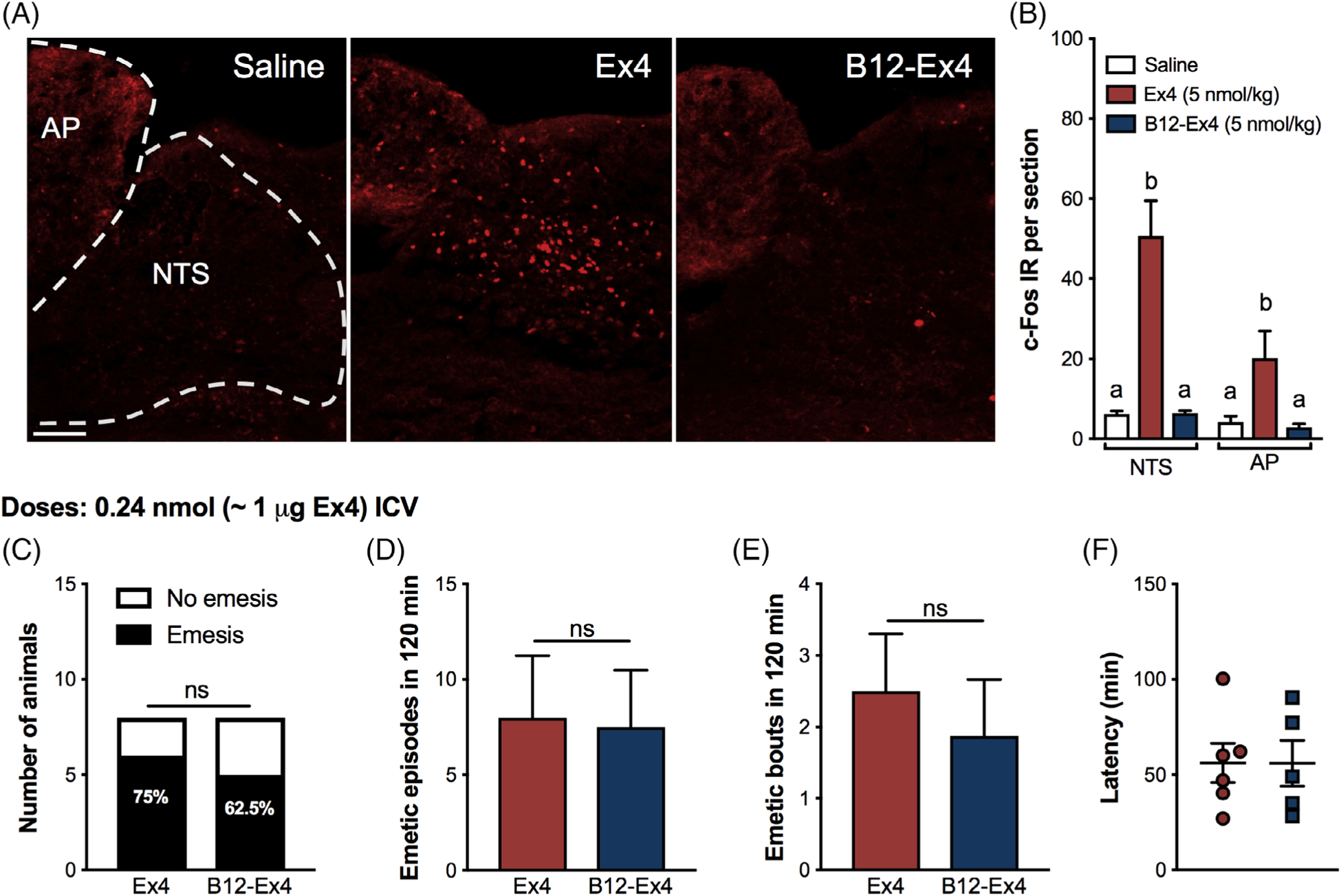FIGURE 4.

Systemic administered B12-Ex4 does not activate the area postrema (AP) or the nucleus tractus solitarius (NTS) in shrews but it causes emesis when administered centrally. (A) Representative immunostainings of the AP/NTS region showing the c-Fos response following saline (n = 4), Ex4 (5 nmol/kg, n = 4) and equimolar B12-Ex4 (n = 5) systemic treatment. (B) Peripheral Ex4 administration significantly increased the number of c-Fos immunoreactive (IR) cells in the AP/NTS of shrews 3 hours after injection. The number of c-Fos–positive cells in the AP/NTS was significantly lower in B12-Ex4–treated animals and it did not differ from saline-treated shrews. (C) Ex4 (0.24 nmol, i.e. 1 μg), equimolar B12-Ex4 or vehicle was infused into the lateral ventricle. The percentage of shrews showing emesis was similar between Ex4 and B12-Ex.4. (D, E) The number of single emetic episodes or bouts following Ex4, B12-Ex4 or saline was recorded for 120 minutes. Both Ex4 and B12-Ex4 induced comparable emetic responses, while none of the animals experienced emesis following vehicle delivery (data not shown). (F) Latency to the first emetic episode in Ex4- and B12-Ex4–treated animals that exhibited emesis did not differ. Data in (B) were analysed with one-way ANOVA followed by Tukey post hoc test. Means with different letters are significantly different from each other (P < .05). In (C) the analysis was performed with Fisher’s exact test. Data in (D-F) were analysed with Student t-test (n = 8, within subject). Values are expressed as mean ± SEM. Scale bar 100 μm
